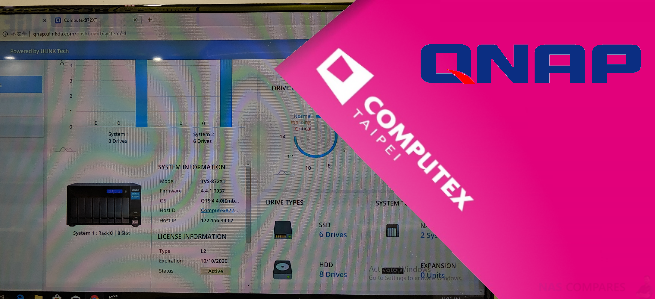QNAP, ULINK and the Drive Analyzer
When it comes to ensuring the safety net of the hard drives on your NAS, most users fall back on the old, tested and reliable method of Redundant Array of Independent Disks (RAID), in order to have a system that in most cases will ensure that if a HDD fails, the data on your NAS Drive will be safe and recoverable upon installing a new drive. This is well established and although used in home and business environments alike, it has one big flaw – the time it takes to rebuild after a RAID failure can be completely unpredictable. Even a low capacity RAID 5 failure can take 8, 12, 24 hours or more and that does not include the time it takes to go out and buy the replacement drive if you don’t have a spare – and when your business is grinding to a halt over the loss of data access, it isn;t really the best time to pop to the shop with the company card in the hope they have a drive at the last minute. Wouldn’t it be better if you had a way of KNOWING that a drive was going to/could potentially fail BEFORE it happened? Well, that is what QNAP Drive Analyzer with ULINK is about. Let’s discuss.
What is Drive Analyzer, Who are ULINK and Why is it a Big Deal?
QNAP and ULINK have also teamed up to create the Drive Analyzer, an AI engine that predicts the expected life of storage drives – helping to prevent data loss due to unexpected drive failure. Visitors can receive first-hand information about the Drive Analyzer at QNAP’s booth at Computex. What this means in real terms (and if you are at Computex 2019 right now, I advise you to head over and see) is that whilst your NAS Drive is running, analytical information regarding temperature, rpm speeds, vibration, spin speeds, retrieval, write speeds, read and more are sent to the ULINK service. No personal data is sent, just the technical data of what the disks are doing. This data is then fed into the ULINK/QNAP dashboard (via your web browser to see) and using their ENORMOUS catalogue of drive history, heal indicators, preset scenarios and case examples, are able to give you both a deep overview of the drives in your NAS (and any other drives you want to add) and also give you a statistical likelihood of that drive failing. This is INVALUABLE as it can help you prepare in advance and even begin data migration onto a new drive.
What Can ULINK/QNAP Data Analyzer Do Now?
Right now, the setup is in its early stages. The QNAP is able to send the information to ULINK and has its own bespoke UI. From here you can access all the drive information right that second and access the catalogue of test data covering everything you will ever need. It is still running in a separate tab/GUI from QTS and full integration is still a wee while away, but the idea is very clearly mapped out and shows very concise and informative information on your drives, good or bad!
What Will ULINK/QNAP Data Analyzer Do in the Future?
After discussing the software with the product management at QNAP at Computex 2019, they highlighted a number of future plans for this software. These included:
- Fully QTS integration, within the QTS Storage Manager Dashboard
- Direct recommendations of implementing any directions from the ULINK software to alert users of potential issues
- Connecting these services to Hot Spare Drives and actioning copy/migration of potentially future failing drives over to healthy spare drives, thereby IF/WHEN the original drive fails, there will be almost ZERO RAID rebuild time and jsut a case of swapping between drive bays internally.
All in all, this sounds fantastically innovative, yet simple and I look forward to seeing this makes it’s way into QNAP QTS.
This description contains links to Amazon. These links will take you to some of the products mentioned in today’s video. As an Amazon Associate, I earn from qualifying purchases
